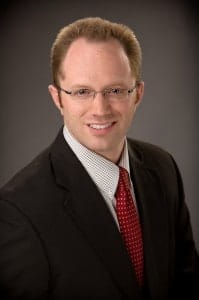With high-deductible health plan enrollment growth of 1,000% over the past seven years, an increased number of patients are finding themselves paying $1,000 or more per year in deductibles, coinsurances, and copays.
Most healthcare providers, especially those claiming tax-exempt status as not-for-profit organizations, assess patients’ inability to pay in determining eligibility for financial aid. Claiming tax-exempt status under the “health promotion” purpose defined by the IRS, exempts a healthcare provider from paying taxes in exchange for providing social services and/or related safety net services that the government would otherwise have to provide.
Inability to Pay
It is a commonly accepted practice for financial aid and charity care to be offered to patients who are determined to have a genuine inability to pay. Providers may request evidence of a patient’s financial hardship by requesting the completion of a financial aid application and copies of bank statements, pay stubs, or tax returns. Various forms of financial aid made be offered based on the level of financial hardship demonstrated.
Sliding income scale
The sliding income scale discount is one of the most common devices used by not-for-profit hospitals. The income scale is measured as a percent of federal poverty level (FPL) relative to a patient’s family size and household income. Patients receive larger discounts for income that is lower relative to FPL. Most hospitals waive all patient liability if their income for their household size is 200% of FPL or less. Many hospitals offer discounted care up to 400% to 500% of FPL
Charity Care
When a provider writes-off a patient balance for financial hardship, this is considered charity care. Not-for-profit hospitals must report the charity care they provide annually to IRS on the form Schedule H. There is currently no required minimum level of charity care for not-for-profit healthcare providers, though it is often the basis for challenging tax-exempt status.
Uninsured/Self-Pay Discount
Almost every provider has a flat percent discount they apply to the accounts of patients with no health insurance coverage. This percentage can vary from 30% to 70% depending on the charge structure of the healthcare provider.
Annual Limit on Proportion of AGI
Many organizations will recognize an annual out-of-pocket limit for families, such as 25% of a family’s adjusted gross income (AGI). This practice is based on the idea that it is unreasonable for a family experiencing a medical catastrophe to have to pay more than a quarter of their AGI on medical expenses. The burden of proof falls on the patient to prove the expenses.
Interest Free Financing
Many organizations will extend payment plans for reason of financial hardship. It is generally frowned upon for healthcare providers to charge patients interest on outstanding balances. Payment plans may vary in terms from 3 months to 24 months depending upon the organization’s policies.
Elective and Non-Elective Treatments
Some organizations do not extend financial aid to patients for elective surgery and other elective treatments because they are “planned” events for which patients could save in advance. This policy position is debatable, but generally it is a best practice for patients to make their provider aware of financial hardship in advance of having an elective procedure. It is also a best practice for providers to screen for financial hardship during pre-admission phone calls.
Summary
Most healthcare providers have formal financial aid policies that determine the eligibility criteria for financial aid based on some measure of inability to pay. Whenever possible, providers and patients should establish if financial hardship is a concern in advance of treatment or soon thereafter.
Nicholas Newsad, MHSA is the author of The Medical Bill Survival Guide: Easy, Effective Strategies for People Experiencing Financial Hardship and founder of MedicalBillExchange.com. He has been quoted on medical bill assistance in the NY Daily News, LA Times, MSN Money, and SmartMoney.com.






